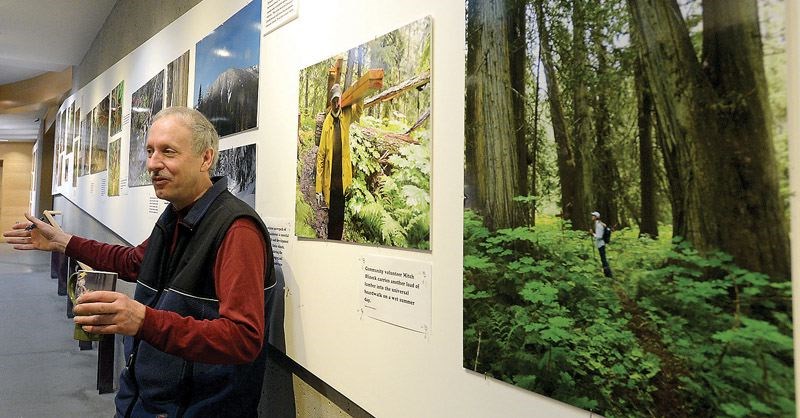Prof. Darwyn Coxson likened the array of Ancient Forest-inspired photographs to forgotten family photographs, pulled from the dust.
"Let's shine them up and put them in the front hallway and put a light on them and let the world know about it," said Coxson of the the rare inland rainforest images that now line a hallway at the University of Northern B.C.'s Rotunda Gallery.
Rare plant species, students strung high in branches and the massive ancient red cedars that make the trail unique - all photographed by him and Nowell Senior of the Caledonia Ramblers, a group that has advocated for making the trail a world heritage site.
"It's a celebration of the value the trail has had for science and education," said the ecosystem science professor, who will launch the exhibition Friday with a talk on the Ancient Forest Trail.
Studying the forest has long been an affair of fascination for Coxson.
"Like most people who arrived in Prince George, I didn't know they were there and they just blew me away, this amazing temperate rain forest ecosystem on our doorstep," said Coxson, who has been teaching at UNBC for 20 years. "At that point in time it was largely unknown to science."
Home to some of the oldest trees in the province, it's perhaps most notable as the only inland temperate rainforest so far from the ocean - about 800 kilometres away.
It's also the only one that has snow six months of the year.
"We should not have a rainforest in our inland mountain ranges and what we are finding is that long deep snowpack, when it melts, provides that extra moisture that allows those giant cedars to grow," said Coxson, adding that the forest soils don't freeze and stay insulated because of the blanket of snow.
The area stretches from Robson Valley south to Revelstoke, but the oldest trees are quite rare, representing only one per cent of landscape.
It more than justifies it becoming a UNESCO World Heritage, said Coxson, but it needs to be declared a provincial park first. It's already protected as an old growth management area, but Coxson has been in regular talks over the past year with the province for the more official designation.
"I think the government is actively looking at this proposal," he said. "We have this amazing asset on our steps and with a different type of recognition, this could be an international destination."
It's estimated some trees are between 1,000 and 2,000 years old, but the oldest are hollow so it's impossible to estimate their true age, said Coxson.
"These forests are like a time capsule," said Coxson, adding the rich ecosystems offer so much for scientific discovery.
One colleague has identified 10 new species of lichen and has 90 more that still need analysis. The branch canopy overhead is still "a scientific frontier," he said, where the undiscovered species abound above the well-researched forest floor.
But academia is but one part of the trail's "success story," Coxson said.
"This would all be an obscure scientific story if not for the efforts of the community volunteers," he said. "It's an amazing grassroots initiative."
Coxson's talk starts at 3:30 p.m. on Friday at UNBC's Wellwood Theatre.



